Where the smog hangs heavy, where the megacity meets the trees, there’s a hidden civilization. Slithering through the branches above or dodging the chaotic traffic, reptiles and amphibians carve out a placid existence. Home to over 30 species of snakes—from highly venomous pit vipers, deadly cobras, to the world’s longest snakes, the reticulated python—Bangkok’s slithering world survives on the frogs, rats, birds, fish, and lizards that inhabit our city.
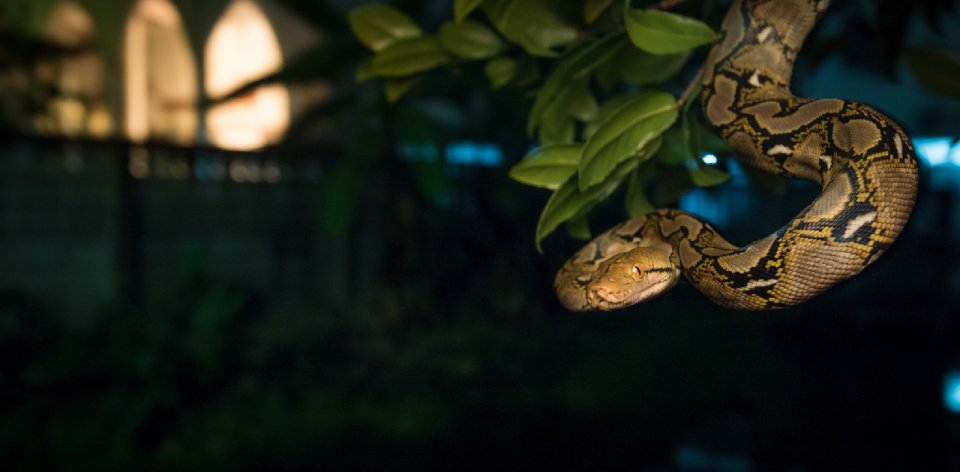 Photo: Reticulated python / Ton tan Travel
Photo: Reticulated python / Ton tan Travel
To learn more, BK went on a herping tour in Prawet with Ton tan Travel. Prawet, a bit outside the city center, sits among houses, wild areas and swamps, and in just one tour, we spotted three different species of snake up-close and in their natural habitat.
We walked along the canal with our highly skilled snake handler using flashlights to find these hissing creatures and came across the Asian vine snake, a common sight and one easily spotted on the tour. The guide nonchalantly gives the snake over and instructs you to continue pulling it up like a rope if it slithers out of your hand. The slender creature may reach 60 inches long and is under an inch thick. Harmless to humans, frogs, lizards, smaller snakes, and birds are its prey. You can find these adorable little hunters in trees or on tall grass.
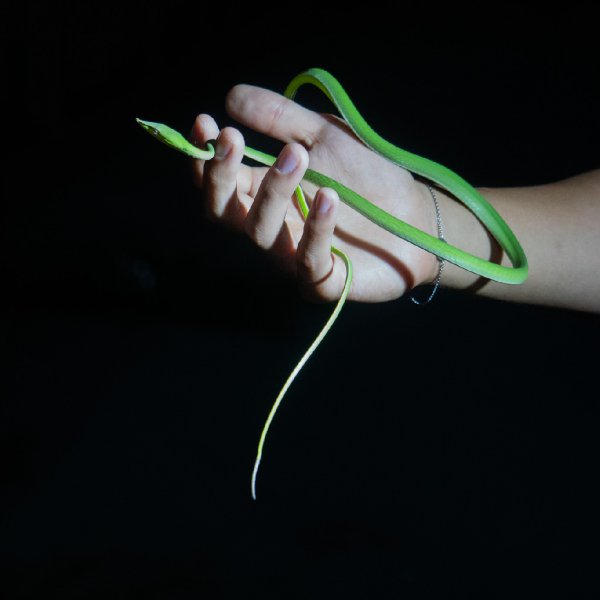 Photo: Asian vine snake / BK Magazine
Photo: Asian vine snake / BK Magazine
Within a quick second reaction after the guide's light catches a gleam of snake skin, he plunges his hand into the murky waters and emerges with an intriguing discovery, the tentacled snake—a much rarer find and an extremely curious one. A water snake found in murky water, this species has twin “tentacles” on the front of its face used to detect fish that swim nearby, which it injects with a mild fish-specific venom. "This one is a rare find, we're lucky to have found one," says the guide, as he maintains a firm grasp on the reptile.
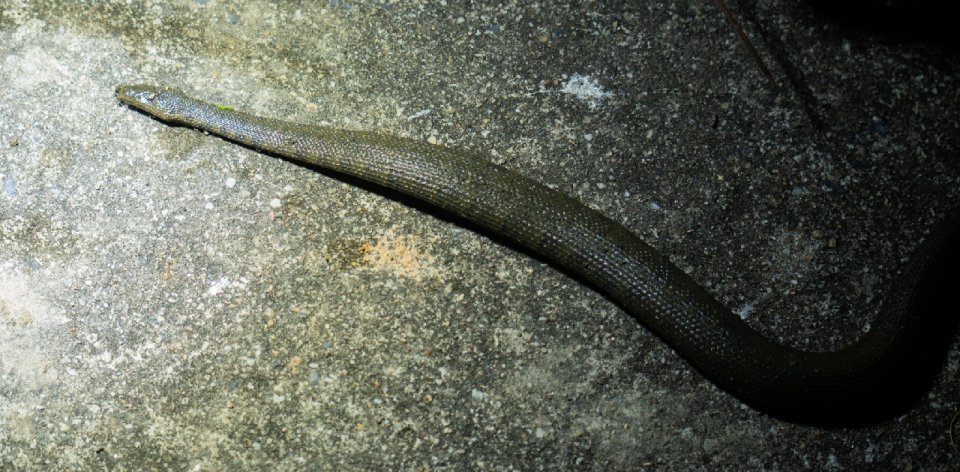 Photo: Tentacled snake / BK Magazine
Photo: Tentacled snake / BK Magazine
The last one spotted wasn’t harmless. Coiled up on the tree branches, was the white-lipped pit viper, the guide uses a snake hook to pick it up and balance it whilst explaining the snakes features. This species can grow up to 100 cm long and has a deadly bite that requires immediate hospitalization. This little terror is the cause of the most snake-bite hospitalizations in Thailand. Ambush hunters are, by their nature, hard to spot—so this is not one you want to come upon by surprise.
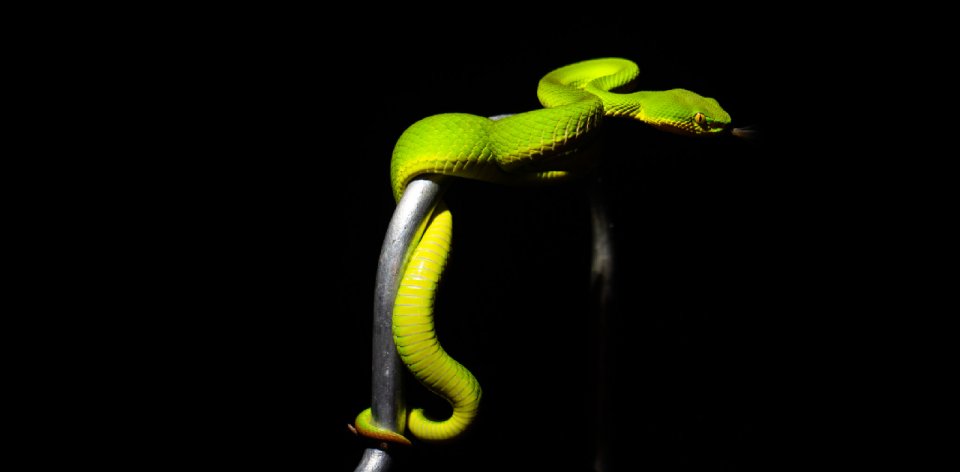 Photo: White-Llpped pit viper / BK Magazine
Photo: White-Llpped pit viper / BK Magazine
For one evening along the serpentine route, three species is a stark reminder that we aren’t alone in this city. Others, such as the large-eyed pit viper can be found in areas such as Benjakitti Park, another dangerous ambush hunter.
One of the more common snakes you’re likely to run into is the reticulated python, the world’s longest snake and third heaviest. Put simply, they are not hard to spot. They get everywhere—including places they’re not wanted. These non-venomous constrictors, however, aren’t interested in a human meal. However, following the herping trip, you truly transition from being repelled to actively seeking out encounters with these beautiful animals.
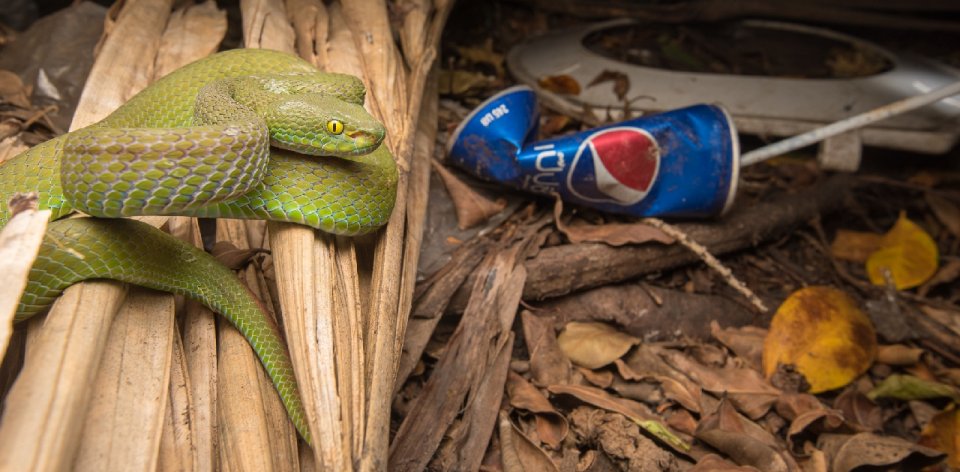 Photo: Large-eyed pit viper / Ton tan Travel
Photo: Large-eyed pit viper / Ton tan Travel
So, why are there snakes crawling all over our city? Let’s rewind. Bangkok 2.5 million years ago was a marshland of the Chaophraya Delta, a breeding ground for snakes and other reptiles hunting small prey, and it stayed that way until only a few hundred years ago. Now, if a python shows up in a kitchen or a vine snake startles us, we pretend they’re the invader. They’re not. We are.
Around 70% of wildlife hotline or firemen calls are to remove snakes, pythons in particular, followed by cobras, vipers, and kraits, the last three being highly venomous. Despite being one of the most feared animals in the city, snakes aren’t that interested in us.
To find out how we can all learn to live together, BK went to the Red Cross Foundation Snake Farm to learn about the proper measures to take if bitten. Almost all snake bites are caused by picking up a snake, stomping on it, or placing your hand in front of it.
- Treat every snake bite as a venomous bite.
- Remove the snake as safely and calmly as you can.
- Take a picture of the snake to identify it later.
- Get to the hospital right away or call an ambulance and let a friend or neighbor know.
- Try not to move the bitten area.
- Lie down if possible.
- If you know the snake was a cobra, krait, or keelback, you need to wrap the bite area from the bottom up.
- Do not make a tourniquet and stop all blood circulation.
Also, obviously, don’t just kill snakes. If your goal is to wipe out snake-kind, it’s a futile effort. They were here before Bangkok, they’ll be here after. Snakes hunt mice and rats, saving crops and preventing the spread of disease. So, don’t be an enemy of the ecosystem, for goodness snake.
Turtles
A less maligned reptile, turtles are a common sight in parks, ponds, and certain bodies of water throughout the city. Surprisingly, not many are native to the ecosystem, and the species found in Bangkok today are released into the wild.
Lumpini Park is one of the most popular areas to spot turtles in Bangkok. Sadly, many turtles are considered endangered or extinct as a result of habitat damage and being hunted for food and for traditional medicine. There are also longstanding cultural practices of releasing turtles into temple ponds, believed to bring blessings to the releasers but often resulting in adverse effects on the welfare of the turtles and ecosystem. Instances of land turtles being found deceased or injured after release into temple ponds are not uncommon.
The Asian box turtle is omnivorous and has a sort of hinging plastron; it can hide inside its shell, but unlike other species, it can close off the ‘entrance.’
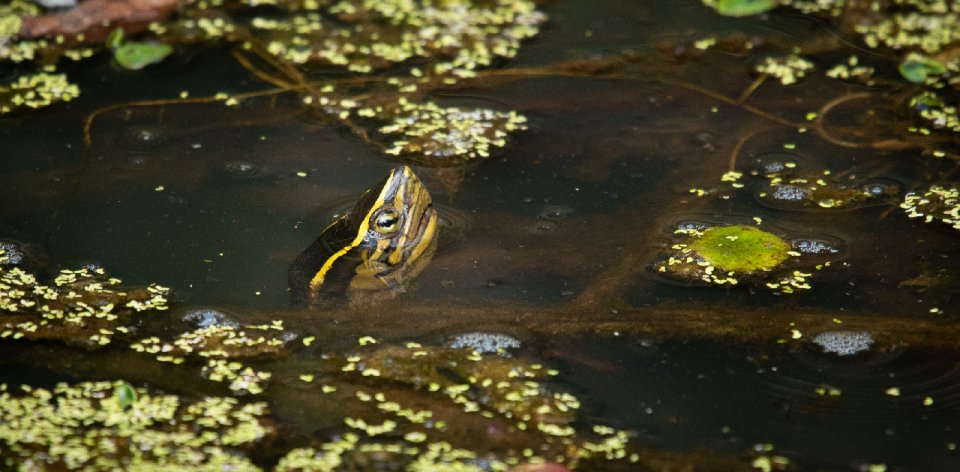 Photo: Asian box turtle / Ton tan Travel
Photo: Asian box turtle / Ton tan Travel
The yellow-headed temple turtle is the largest species of hard-shelled turtle that can be seen on herping tours. They are also one of the species that are ritually released into ponds in Buddhist temples, hence the name—unfortunately they are critically endangered.
Similarly, the black marsh turtle, also endangered, is often released into temple ponds, and some consider them sacred because they think they hold the spirits of those who perished while attempting to save others from drowning.
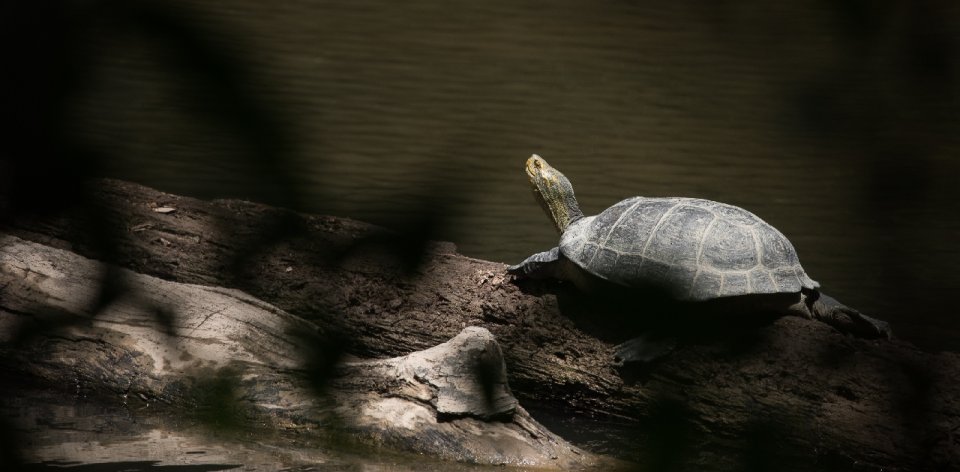 Photo: Yellow-headed temple turtle / Ton tan Travel
Photo: Yellow-headed temple turtle / Ton tan Travel
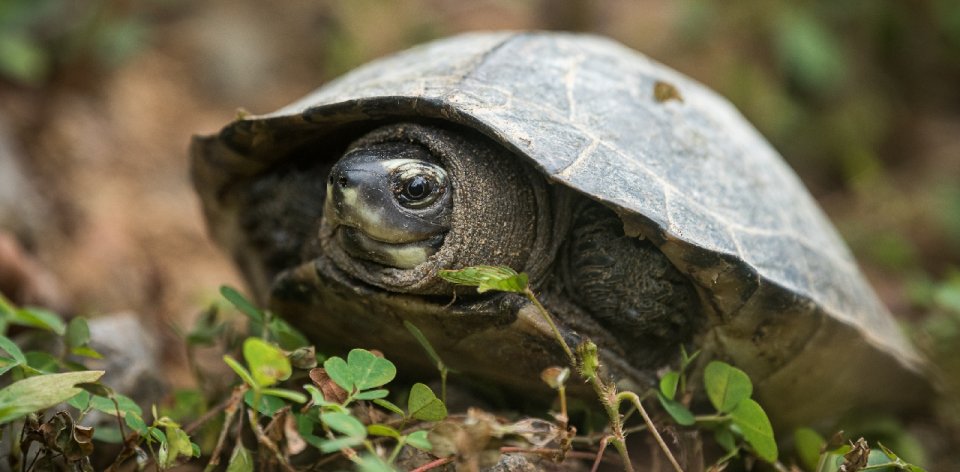 Black Marsh Turtle Photo by Ton tan Travel
Black Marsh Turtle Photo by Ton tan Travel
Want the very best stories from BK Magazine delivered straight to your inbox every Thursday afternoon? Sign up for BK Weekly and stay up to date on what’s new and cool in Bangkok.